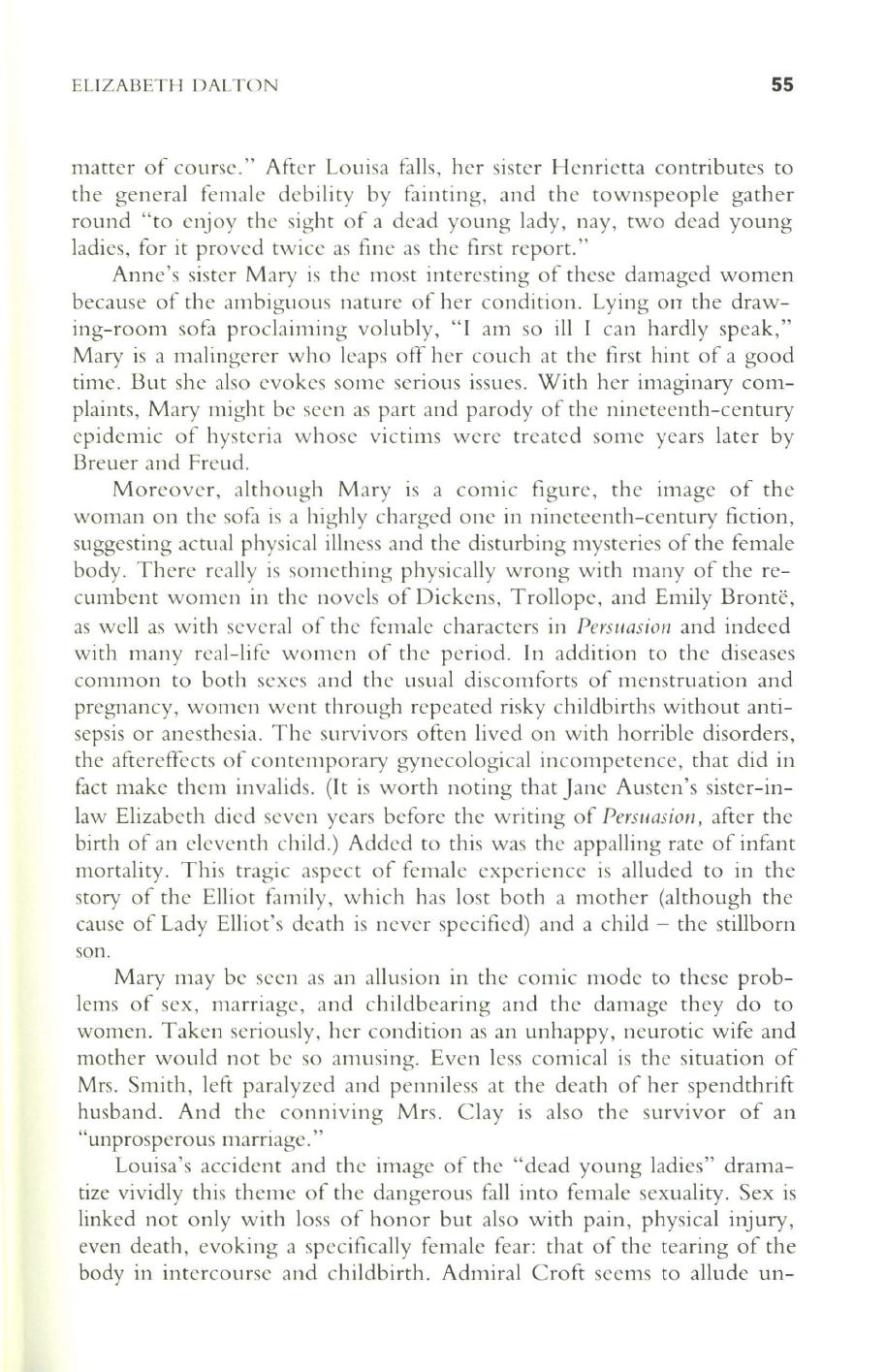
ELIZABETH DALTON
55
matter of course." After Louisa falls, her sister Henrietta contributes to
the general female debility by fainting, and the townspeople gather
round "to enjoy the sight of a dead young lady, nay, two dead young
ladies, for it proved twice as fine as the first report."
Anne's sister Mary is the most interesting of these damaged women
because of the ambiguous nature of her condition. Lying on the draw–
ing-room sofa proclaiming volubly, "I am so ill I can hardly speak,"
Mary is a malingerer who leaps off her couch at the first hint of a good
time. But she also evokes some serious issues. With her imaginary com–
plaints, Mary might be seen as part and parody of the nineteenth-century
epidemic of hysteria whose victims were treated some years later by
Breuer and Freud.
Moreover, although Mary is a comic figure, the image of the
woman on the sofa is a highly charged one in nineteenth-century fiction,
suggesting actual physical illness and the disturbing mysteries of the female
body. There really is something physically wrong with many of the re–
cumbent women in the novels of Dickens, Trollope, and Emily Bronte,
as well as with several of the female characters in
Persllasion
and indeed
with many real-life women of the period.
In
addition to the diseases
common
to
both sexes and the usual discomforts of menstruation and
pregnancy, women went through repeated risky childbirths without anti–
sepsis or anesthesia. The survivors often lived on with horrible disorders,
the aftereffects of contemporary gynecological incompetence, that did in
fact make them invalids. (It is worth noting that Jane Austen's sister-in–
law Elizabeth died seven years before the writing of
Persllasion,
after the
birth of an eleventh child.) Added to this was the appalling rate of infant
mortality. This tragic aspect of female experience is alluded to in the
story of the Elliot family, which has lost both a mother (although the
cause of Lady Elliot's death is never specified) and a child - the stillborn
son.
Mary may be seen as an allusion in the comic mode to these prob–
lems of sex, marriage, and childbearing and the damage they do to
women. Taken seriously, her condition as an unhappy, neurotic wife and
mother would not be so amusing. Even less comical is the situation of
Mrs. Smith, left paralyzed and penniless at the death of her spendthrift
husband. And the conniving Mrs. Clay is also the survivor of an
"unprosperous marnage."
Louisa's accident and the image of the "dead young ladies" drama–
tize vividly this theme of the dangerous fall into female sexuality. Sex is
linked not only with loss of honor but also with pain, physical injury,
even death, evoking a specifically female fear: that of the tearing of the
body in intercourse and childbirth. Admiral Croft seems to allude un-


